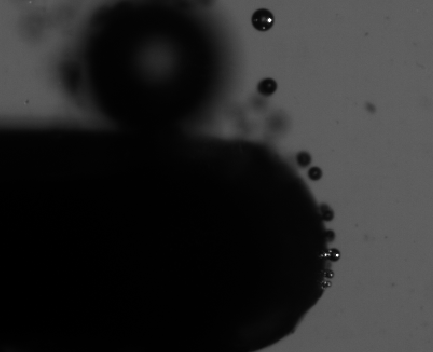M.Sc. Jonathan Franz
Working area(s)
Contact
franz@rsm.tu-...
work +49 6151 16-28898
Work
L6|01 122
Otto-Berndt-Str. 3
64287
Darmstadt
- Research into bubble formation during alkaline water electrolysis
- Optical bubble detection and tracking

Alkaline water electrolysis can be used to synthesize hydrogen using renewable energy sources. However the process currently lacks both in efficiency and scalability. Both factors are influenced by the formation, detachment and flow of the produced gas bubbles on the surface of the electrode.
To better understand this interaction for different geometries, two test rigs are in use. One uses ambient temperature and pressure and no forced convection. The other one is used for higher temperatures and pressures and can be used to apply forced convection. Both rigs use laser assisted optical measurement techniques. These are based on laser marked shadowgraphy (LMS), glare point velocimetry (GPV) and global phase doppler (GPD).



